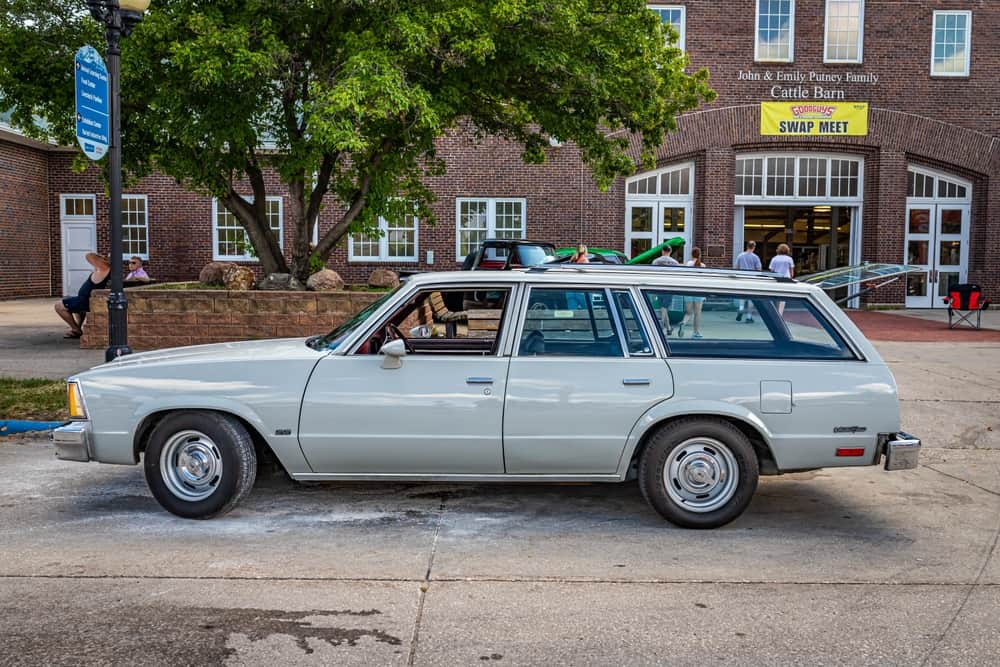How Often Do I Need an Oil Change?

You hop in your car, truck, or SUV, start the engine, and the warning light system turns on, running a quick diagnostic. Most of the symbols shut off seconds later, but the oil lamp one stays lit, and it’s glowing red, letting you know you need an oil change.
Heading to the mechanic immediately may seem like a time and money drain, but this isn’t the type of service that can wait. Driving around when your vehicle’s oil needs changing could cause the engine to overheat, jam, and fail, leaving you stranded, waiting for roadside assistance.
How often you need an oil change depends largely on the age of your vehicle and the kind of motor oil it uses as well as your regular driving conditions and driving habits. Here’s a look at what you need to know about oil changes so you can plan ahead and not risk irreparable damage to your vehicle’s engine.
When Do Most Vehicles Typically Need an Oil Change?
Motor oil powers a vehicle’s engine, lubricating all of its moving parts and protecting it from corrosion. Changing the motor oil helps clear away harmful deposits that could damage the engine, improving fuel efficiency and overall performance.
In a nutshell, regular oil changes lead to smoother rides and a healthier engine.
According to AAA, most vehicles typically need an oil change every 3,000 miles or six months to a year if it isn’t driven around too much. While more modern engines can stretch it a bit further to an interval between 7,500 and 10,000 miles, fully-synthetic motor oil can get your vehicle as far as 15,000 miles without an oil change.
If you want to know when your car needs an oil change, check the owner’s manual. It should give you a mileage estimate, the oil type you should use, and a time recommendation. The owner’s manual will also let you know when your car and its tires need maintenance.
How Old Is Your Car?
The most basic, modern cars, trucks, and SUVs typically have simple warning light systems that monitor engine health. They include an oil pressure symbol – typically an oil lamp – that glows red when you need an oil change. Newer models might have more advanced oil-life monitoring systems that analyze the vehicle’s operating conditions, shortening the oil change interval after heavy-duty use.
Here’s a closer look at how your car’s age impacts oil change frequency.
Newer Vehicles
If your vehicle’s new and still under warranty, you’ll likely take it to the dealership when you reach specific mileage intervals for required inspections and service maintenance, which includes oil changes.
If you have a high-end model, it may be equipped with a built-in oil-life monitor that uses an algorithm, sensors, and software to calculate the motor oil’s condition, adjusting the change intervals. It makes its calculations by gauging drive time, idle time, outside temperatures, and engine revs, displaying a percentage readout of the remaining oil life in the instrument cluster.
If the oil-pressure warning symbol lights up red while you’re driving or idle, it likely means you’re out of oil or have a very serious engine issue, according to Car and Driver. When that happens, head over to the dealership immediately to get it checked out.
Older Vehicles
Mileage determines when older cars, SUVs, and pickups need oil changes. Like newer models, older vehicles are typically serviced during routine maintenance.
If you drive your vehicle at average speeds on Alabama or Louisiana’s city streets, paved roads, and highways, you’ll likely just need an oil change when you reach the next 3,000 to 5,000-mile interval. It may require severe service and more frequent oil changes if its use is more extreme.
If you drive an older, used vehicle, you may want to consider looking at its history report to ensure its maintenance record’s in top shape.
Whether you drive a new vehicle or an older model, the service technician should reset the oil-life monitoring system when the oil’s changed. You can also reset it yourself by following the instructions in the owner’s manual.
What Motor Oil Do You Use?

If you’re driving a new vehicle, it may be tempting to pay for premium, extended-life synthetic oils to stretch your next oil change out to the 10,000 to 12,000-mile limit. Almost all new vehicles already use synthetic motor oil, so you may not need an upgrade.
By contrast, older vehicles can generally use synthetic motor oil or the conventional, petroleum-based kind. While synthetic oils are usually pricier, they have special additives that can enhance an older vehicle’s performance, allowing it to go longer distances, resist extreme cold or heat, and filter out dirt and particulates better.
Whether your vehicle has an automatic or manual transmission, each one has a specific kind of motor oil that best suits it. Always check the owner’s manual to make sure you’re using the right one.
What Are Your Driving Conditions and Habits?
Do you typically drive along flat, well-paved roadways in light-to-moderate, stop-and-go traffic? Do you use your vehicle to transport heavy items or to pull a trailer at peak traffic times, or do you drive in rural backroads often? Does it get extremely cold or hot in your area? And if it does, do you park your car inside a garage or keep it outside, exposed to the elements?
All of these factors affect the use of your vehicle’s motor oil. Extreme temperatures, continual stop-and-go driving, and pulling heavy loads require more work from the engine and its mechanisms, meaning you’ll likely need an oil change sooner than a vehicle in normal driving conditions.
Do You Really Need an Oil Change When the Warning Light’s On?
If the oil lamp symbol on the instrument cluster is glowing solid red, yes, you do — right now. Waiting could cause irreparable damage to your vehicle’s engine. Your best bet is to plan ahead and keep your vehicle in check.
At USAgencies, we’ve got your car’s best interests in mind. If you live in Alabama or Louisiana, we can help you find cheap car insurance with great coverage. Start your quote online or giving us a call at 800-958-8545, and one of our friendly, knowledgeable insurance advisors will help you choose a policy that fits your needs and budget.


